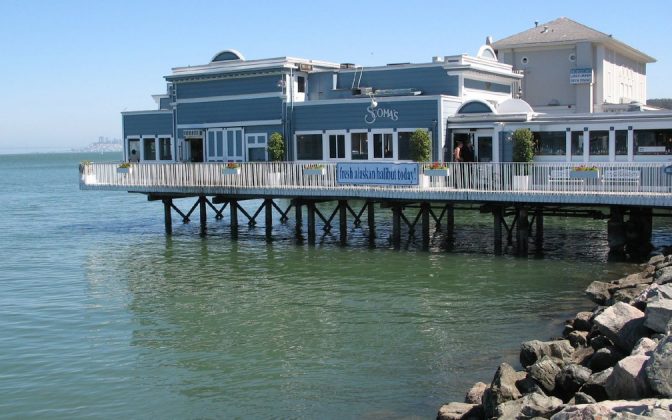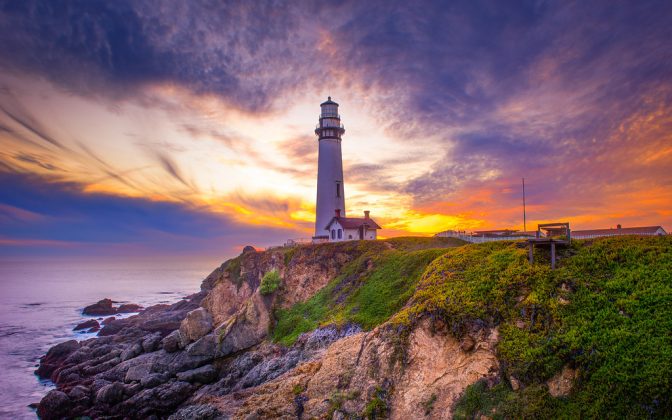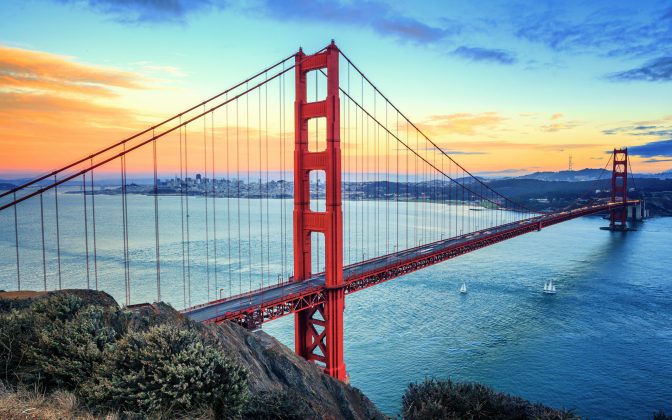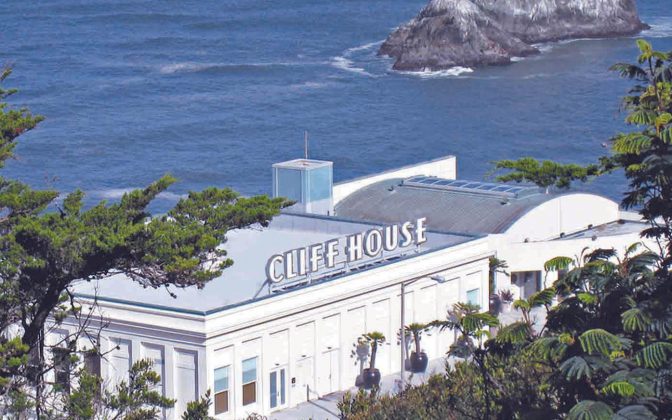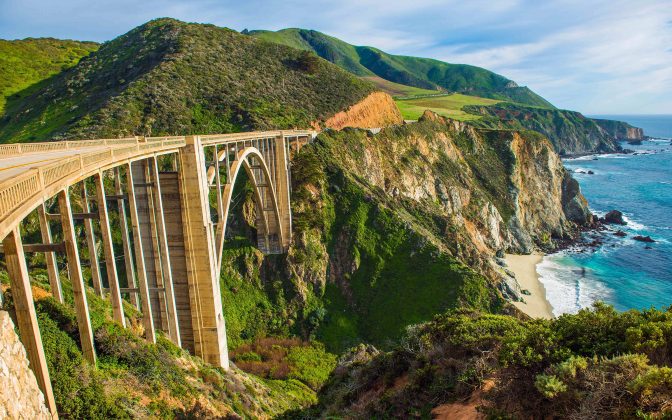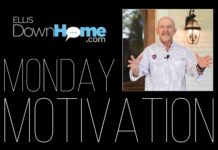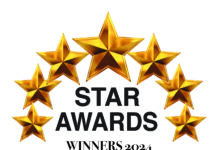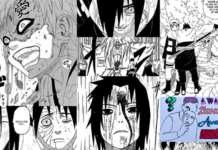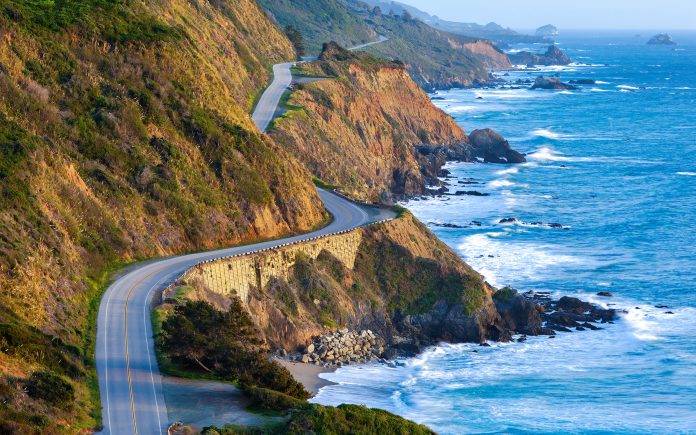
I’ve been blessed to have traveled the Pacific Coast Highway, known also as Highway 1, both northbound and southerly, several times in my lifetime. Each time there are two distinct things that happen. First, I become even more convinced there is a God because such absolute beauty must radiate from a heavenly source. And secondly, I always find some new and wonderful places to eat, sleep and be merry.
For every eatery, accommodation, attraction and shopping experience mentioned in Traveling the Pacific Highway there have been so many more which I have tried once and will never again. And, that is the purpose of this article. It is to save you the trial and error of my past trips and share with you some real gems of people, places and things which you will enjoy. Hopefully, you will find the experience of the 500+ miles of Hwy. 1 from LA to Napa Valley as breathtakingly beautiful and rewarding as my wife, Becky, and I have experienced. If it is on your bucket list, you will never regret making it happen.
The first time for me was as a nine-year-old with my parents. I thought curving around cliffs with several hundred-foot drops to the ocean was cool. I can remember my mother saying to my dad, “Oh my gosh, Joe, we’re going to die.” We didn’t….which has given me the wonderful experience to have driven the Pacific Highway several times since then.
The last time was September 2019, when the cool air and clear skies made the journey ideal. Fog and rain, summer tourist congestion (sometimes 20 miles of bumper to bumper jam-ups) and missing the lush greens of farms and vineyards make other times of the year less enjoyable. But it is more than just a spectacular scenic trek. It is turning a curve with a vista point where you can watch surfers and hang-glider or seals and dolphins It is wonderful small communities with hometown bistros and boutiques. There are miles of beaches and grand expanses of the Pacific and western sky. The drive gives you a glorious gift…… a kaleidoscope of memories.
It would be too grueling to make the 500+ mile trip from LAX to Napa Valley in just one day. When you split it up into several days you give yourself the opportunity to go slower and stop in many wonderful places. Over the years Becky and I have discovered some quaint little shops and marvelous restaurants making the trips even more enjoyable. I’d like to share some of those special places with you.
Getting Started from LAX – The first 20 miles
Flying into Los Angeles, deplaning and reaching an off-airport car rental facility is not as difficult as many major airports. From touchdown to getting behind the wheel of your rental care takes less than an hour. But getting out of LA can be tricky. Highway 1, which is the Pacific Highway, basically runs directly through LAX. Most of the car rental locations are south of the airport. Your rental agent will give you a map. Basically, you will go west less than one-half mile to meet up with Lincoln Boulevard and Highway 1and then, go north on the Pacific Coast Highway.
About 7 miles north you will connect with I-10 (the same one that goes through Houston) and will head west. In a few miles you will be seeing breaking waves and soaring seagulls at the City of Santa Monica and run into Highway 1 again. Although, you could spend several days in that city at the famous pier, restaurants, aquarium, great shopping and even the original “muscle beach,” I suggest forging ahead to get out of LA traffic.
Malibu to Pismo Beach – From Peas to Shining Sea
From Santa Monica Pier to the Boardwalk of Pismo Beach without stopping takes about four hours. But, over the 180 miles you travel there are many places you will want to visit with fertile farmland on one side and the Pacific on the other. It is mile-after-mile of multimillion-dollar homes and priceless views.
About 10 miles north of Santa Monica you will enter the heart of Malibu. Depending on the time you arrive in LA, you may be getting a little hungry for lunch. Duke’s Restaurant in Malibu is right on the ocean and eating outside on their patio is a real treat. Sometimes you will hear the seals barking and always the seagulls with their hah, hah, hah, hah screech as they look for any crumbs dropped from your table. The menu has a number of good seafood appetizers and entrees and it is reasonably priced. Without question, get reservations for patio seating well ahead of time.
You’ll be leaving the City of Malibu when you see Pepperdine University perched upon a hill. You will leave the coastline for a while but pick it up again at Zuma Beach. About 12 miles north at Point Mugu State Park you will head inland again past Thousand Oaks (where the Cowboys have their training camp and the Reagan Presidential Library), through Oxnard where you merge with Highway 101 until you get to Ventura and back along the coast.
We love the inland stretch because for mile after mile there are farms with artichokes, tomatoes, peas, sweet corn, strawberries, melons and during our September trek, pumpkins. Every half-mile or so there will be a roadside fruit and vegetable stand. A quick stop and a bagful of fresh off the vine produce makes the next part of your drive delicious.
I am aware I’m giving you a lot of directional information but losing the Pacific Coast Highway as it merges into Hwy. 101 is easy to do. You will be taken back with the lack of signage. A GPS or navigation app on your phone is a huge help. And, even then, it is confusing because Highway 1 often leaves the coastline and meanders easterly through stretches of farmlands
When you leave the Malibu area the next cities will be Ventura and Santa Barbara. It will be difficult not to hum the 1972 hit Ventura Highway by the band America as you head that way. It’s fun to go through areas immortalized with California Dreamer, Surfin’ U.S.A. or a jukebox full of Beach Boys hits.
If you’re hungry, the Brophy Brothers restaurant in Santa Barbara Harbor is a nice place to have lunch. It has a wide variety of fresh seafood with a waterfront patio jutting out into a yacht basin with hundreds of boats.
After leaving Santa Barbara it’s about 36 miles to Las Cruces where highways 101 and 1 split. You stay to the left to continue to follow the Pacific Coast Highway which still veers away from the coast because much of the area is taken up by Vandenburg Air Force Base. It is about 70 miles to Pismo, a good place to stop for the day.
We stopped in the Pismo area for two reasons: a restaurant we love overlooking the Pacific and the small towns all around with unique specialty shops and fun festivals. Pismo Beach is about a 200-mile drive from LAX and will take you a little more than 5 hours straight through. With stops along the way, we were ready for a nice dinner and a hotel to rest up for the next day’s drive.
The restaurant we would recommend to anyone who loves seafood, gorgeous views of the Pacific and breathtaking sunsets is Ventana Grill, just north of downtown Pismo. It is perched along the sea with a 180° glass window view of the Pacific. What makes the eatery so exceptional is the majority of menu items are influenced by a south of the border celebration of layered flavors. It’s not Tex-Mex, but rather the California version of Latino cooking. It is different and it is good.
Becky’s entrée was listed as an appetizer, but it was more than she could eat. She had the fire roasted corn and Pasilla quesadilla wrapped around large, tequila lime shrimp. The inside “stuffing” had seared poblano peppers, three types of cheeses, roasted corn salsa and crema. The large, guajillo corn tortillas that held the exceptional blend of components were then grilled to a golden brown.
If you go to the sea it makes sense to have seafood. I enjoyed swordfish which may have been the best I’ve ever tasted because it was complimented with so many Mexicali style roasted vegetables and sauces. Almost every item on the menu was a tribute to fine, Mexican cuisine.
Pismo Beach is a typical boardwalk town with souvenir shops and saltwater taffy. It’s nice to walk along the shoreline, but we found the surrounding communities, especially Arroyo Grande, to be worth the couple mile journey into the countryside.
If we were not meeting friends in Carmel, we would have spent an extra day in the area because it had so many hometown shops and art galleries. We plan to return during one of the many celebrations in the Pismo oceanfront vicinity ranging from clam and harvest celebrations to jazz and art festivals.
Passage Two: Doing the Pacific Zigzag
San Luis Obispo to Carmel on the Sea – 130 miles of OMG
About 12 miles north of Pismo Beach Highways 101 and 1 split at San Luis Obispo. Take the Hwy. 1 exit to the left toward Morro Bay and in about 13 miles you will greet the Pacific once again. At that point you’re about one hour away from the Hearst Castle at San Simeon. Just 10 miles before you reach the castle is the town of Cambria. If you need gas, get it there because the next filling station is about 100 miles away.
The experience of touring William Randolph Hearst’s mansion is a must. The grounds are magnificent, and you have never, I mean never, seen an outdoor swimming pool like the rich and famous enjoyed outside the main mansion. The home was started in 1865 on 40,000 acres of land overlooking the Pacific by W.R. Hearts’s father, which the newspaper tycoon eventually inherited. At one time it comprised 125,000 acres. The home has 165 rooms and 123 acres of manicured landscape.
The Grand Tour (recommended for first time visitors) features the main social gathering rooms. It can be combined with other tours which highlight living quarters, libraries, guest houses, the kitchen and much more. All the tours give visitors a rich profile of Hearst, his wealth, Hollywood and political friends and his eventual downfall. It is 100% worth the time to visit Hearst Castle.
When you leave the castle gates and head north you are about 30 minutes away from the 60 mile adventure of driving the cliffs of what is generally called Big Sur. It is basically a two-lane highway of mostly curves around jagged walls of the San Lucia Mountains on the east side and drops of hundreds of feet along the outside lane. It’s a tad daunting at first but keeping the speed limit (sometimes 25 mph) and watching for on-coming traffic around turns gets much easier after the first few miles. Very few public roadways in the entire world have vista views like the stretch along Big Sur. It is breathtaking. It is beautiful.
Along the route there are plenty of places to pull over to allow cars to pass you or just to stop and absorb the magnificence of the moment. As you begin to drop down to the Monterey Peninsula you will know that every moment of the drive was an unforgettable experience.
On this last journey up the Pacific Coast Highway we spent two nights in Carmel. Our dear friends, Mike and Liz Tull, enjoy a condo on a cliff every September which overlooks the ocean.
Since they know the area so well, they were able to take us to several places liked by the locals. Two are well worth a visit even if you do not spend the night.
The first is tucked away just off the main shopping area of Carmel, thus, most tourists don’t venture there. Bad for them, good for us. It is called Casanova’s, and you will love it. All of us shared an appetizer of Artichoke Panzanella, with tender artichoke hearts, Boquerón’s, pecorinos, and Aioli dip. We could have stopped there. We didn’t.
Mike had fish tartine on slices of homemade breads spread with jams, cheeses, avocados and fresh off the boat seafood (Monterey and its large fishing village is only 4 miles away).
Becky had spinach cannelloni, topped with Mozzarella, garlic and a rich tomato sauce, cooked with a French cuisine influence and layered with many flavors. Liz and I had undoubtably the best seafood fettuccine either of us ever had. The difference was a smooth white wine sauce which complimented the shrimp and mussels rather than overwhelm their richness with a heavy cream seen with many fettuccine fares. If you are ever in Carmel, Casanova’s is well worth the time to enjoy lunch or dinner.
For brunch the next day we ate at Clint Eastwood’s Mission Ranch resort. Although the food was good, the highlight is sitting out on the patio overlooking Point Lobos bay, a field with grazing sheep, steep hillsides with mansions outcropping from ledges and wildlife from barking seals to deer.
We stayed at the Hyatt Regency Monterey, a beautiful resort which was very reasonably priced. You can’t enjoy Carmel…and there is so much to enjoy….by just stopping by to shop and have a meal in a few hours. The downtown boutiques, art galleries and clothing stores could easily take a solid day or two to visit most of them. Then there are side trips, like the one we took to the Carmel Valley with wine tasting and artisan markets.
The City of Carmel Valley is about 15 miles east on G16 (Carmel Valley Road). It’s a lovely drive in the countryside where farms and ranches follow the weaving Carmel River. You would not guess the community has only 4,500 residents because there are so many wine tasting locations, wonderful art galleries, craft and specialty shops. There is even a trolley which takes visitors to all the wine tasting venues.
The cities of Carmel by the Bay and Monterey are less than five miles apart. Whereas Carmel is preppy, Monterey is peppy. It’s a fun place with the vibe and energy, aromas and music of a French Quarter on the Pacific instead of the Mississippi.
Monterey has a population of less than 35,000, but there must be at least that many tourists eating, drinking, shopping and having a hoot every weekend. Ground zero is Cannery Row. Made famous with John Steinbeck’s novel of the fishing industry in 1945, the warehouses have been converted into boutique and souvenir shops, restaurants ranging from Bubba Gump’s to high end ocean view dining and bars, bistros and a buzz wherever you go.
The world-renowned Monterey Aquarium anchors one end of Cannery Row and sailboats, yachts and fishing boats border its Pacific side. A beautiful historic section of the city radiates from the harbor and is well worth a drive through its tree-lined streets. Cannery Row also offers several excellent hotels for those who want to be in the middle of all the action.
Although the harbor area features many good eateries, our favorite is the Monterey Fish House located about 3 miles along Del Monte Avenue from Cannery Row. By all appearances the converted house does not look like it has won the best seafood restaurant in the area year after year, however, the accolades seem to be unanimous from all travel review sites and customers. It has even been spotlighted on Food Network’s Diners, Drive-ins and Dives.
If you want to go to the Monterey Fish House there are two things you must do. First, always get reservations. Second, have at least someone at the table order an oak-grilled seafood dish. It is special.
It would be very easy to spend a week in Carmel and Monterey and not travel anywhere else in California. You fly non-stop from Dallas Love or DFW to San Jose and rent a car. Monterey is only 75 miles away from the airport. There is so much to do in the Monterey Peninsula area, including deep sea fishing, whale watching excursions and scuba diving. There are events, festivals and concerts every month. Plus San Francisco, and all the beauty and magic it offers, is only 50 miles from San Jose.
However, our 500+ mile Hwy. 1 journey from Las Angeles to the northern part of Napa Valley meant pushing on, even though one of the most beautiful and bountiful parts of the U.S. beckoned us to stay.
Passage Three: From a golden sunrise to the Golden Gate
We pulled out of Carmel and headed to San Francisco to continue our trek toward the Napa and Sonoma Valleys. Most people travel north the 20 miles to Castroville and pick up Hwy. 101 and drive the additional 100 miles through San Jose to San Francisco. If time makes a difference, even with bumper-to-bumper traffic, then the speedier route is the straight shot on 101. If magnificent beauty, the majesty of the Pacific almost always in sight and the charm of small towns along the way suits you, we suggest continuing the trip along Hwy. 1 to get to the Golden Gate Bridge along the western side of San Francisco.
Even though there are high hills and mountains along most of the 120-mile route from Monterey to the Golden Gate on the Pacific Coast Highway, the roadway is generally straight and at sea level. It’s glorious in the morning hours with fog hugging the valleys and farmlands and the sun hiding behind the hills and finally inching up to cast a iridescent glow on the ocean.
It’s a time to roll down the windows, breath in the fresh sea air, listen to the seabirds cruising the waters and watching beauty awaken. The drive is so much different than heading out of LA and the crowded towns of Santa Monica, Malibu and Ventura. This stretch was distinct from the Hwy. 1 drive through the vast farmlands from Santa Barbara to Morro Bay. And the final flatland route to San Francisco was certainly the opposite of the high cliff, zigzag roads hugging the mountain range along Big Sur. It was different. It was just as remarkably beautiful.
Our passage this day began in Monterey and went northward about 20 miles to Castroville where Hwy. 101 splits with the Pacific Coast Highway. We followed the signs to Moss Landing and then Santa Cruz, a 30-mile segment inland along crops of many varieties. There are plenty of roadside stands along the way to buy fresh picked fruit, enough to fill you until lunch in the San Francisco area. The 2-hour junket took us past mansions on mountain tops, lighthouses, rock outcroppings in the ocean with seals sunning, little towns with artist studios and finally a grand entrance into the north bay of San Francisco.
On this trip we decided not to stay in San Francisco, but rather head directly to the wine country. However, we cannot be in the Bay Area without eating at one of our favorite restaurants in the United States, the celebrated Cliff House on Point Lobos Avenue just north of the Golden Gate Park.
I have already written about the Cliff House in Ellis Downhome (see the U.S. Restaurant section) and have steered friends to eat there any time they visit the city. It is special, not only for its presence high upon a cliff overhanging the Pacific inlet to the Golden Gate Bridge, but also because the seafood is as good as any place we have ever dined. Executive Chef, Kevin Weber, has continued a legacy of fine dining which stretches from the 1860s.
The fact that the Cliff House is only 3 blocks from Hwy. 1, a route we had already traveled more than 450 miles, makes the magic of following the Pacific Ocean even more exceptional. And now, sitting at huge floor-to-ceiling windows overlooking the San Francisco Bay we once again got to take in just how splendid the ocean has been throughout our trip.
Looking westward you view miles of golden beach kissing the ocean. In the other direction are jagged cliffs with countless tales of boats dashed against their boulders. Below you is an outcropping from the water upon which birds circle and seals perch. And yes, all the while you are eating a delish meal.
After lunch we drove about 4 miles to the entrance to the Gold Gate Bridge. Although I had to keep my eyes on the road, I still got a sense of the history and majesty of the span. On one side is the skyline of San Francisco, Alcatraz, Oakland and the hills of Sausalito. On the other side is the western seashore against the backdrop of the Pacific.
About 6-miles north from the bridge Hwy 101 and 1 split again, with 101 heading toward Santa Rosa and the Pacific Highway angling to the coast. If you want to stay on the coast, we have spent a couple of nights at Bodega Bay, about 2 hours north from the Golden Gate. It’s nice and laid back, but wineries are quite a distance away.
If you are seeking wineries there are basically three routes to take. You can continue on 101 and head toward Santa Cruz, follow Hwy. 12 to the City of Sonoma or veer eastward to Hwy. 29 and the Napa Valley. We chose the City of Sonoma because it was between the Sonoma and Napa Valleys, both places we wanted to visit.
Passage Four: The Valleys
It’s difficult to choose where to have your home base when there is so much to do in the grape growing valleys north of the San Francisco Bay Area. A lot has to do with the wineries you wish to visit which total more than 400 in the Napa, Sonoma and Russian River valleys.
The City of Sonoma gave us access to all the major wineries in the valleys. The city of roughly 12,000 is pleasant with a downtown square that is straight from a Norman Rockwall painting. Quaint shops surround the large park upon which city hall sits. When we were there a large art festival was being staged in the park.
One of the best restaurants at which we ate on our trip was in Sonoma, The Girl and The Fig. It’s like what you think an established, hometown diner should be ….more like eating in someone’s home than a place of business. Although the local king salmon and wild mushroom risotto entrees were delicious, we could have been very satisfied with the wide variety of local cheeses, soups, salads and other appetizers.
We stayed, and would highly recommend, the Fairmont Mission Inn Hotel in Sonoma. The land was considered sacred by Indian tribes who bathed in the hot springs bubbling from the earth where the Fairmont now stands. In the late 1890s, entrepreneurs built a resort after a well was dug that produced 112° waters. Today, those same springs are part of the resort’s spa.
The Fairmont Mission Inn sits on a beautiful campus of redwoods, vibrant flowers and a manicured landscape. Although a stay can get a bit pricey during the tourist season, we waited for “deals” and our hotel tab was reasonable especially considering the elegance of the hotel and the personal attention and service all guests enjoy.
As stated, the hotel sits between Santa Rosa and the Napa Valleys, thus it was central to the primary bucket list places we wished to visit. One of our favorite restaurants and wineries is about 20 miles north of Santa Rosa, the Francis Ford Coppola Winery in Geyserville. You will recognize the Coppola name as a famous, academy award winning director for such blockbusters as Patton and The Godfather. Now, it gaining high accolades for his wines.
The grounds, hotel, museum and winery are spectacular. A visitor could spend hours touring the facility. However, our mission is to have the wine with our meal on a patio overlooking hundreds of acres of vineyards with mountains framing the scene. The restaurant is very good but the ambiance is multi-starred. It is worth the drive to the northern edges of Sonoma Valley, because the experience and the sunsets are unforgettable.
Passage Five: A flight, a bite and a sight
The Flight. It has been on Becky and my bucket list for many years to take hot air balloon flight over the vineyards of Napa Valley. Our group met in the City of Napa at 6 a.m. and we were aloft by 8. It was everything and more than we expected.
There were 16 people, plus the pilot, in our gondola as it gently lifted. It is a slow rise and except for the noise of the propane gas used sporadically, the quietness is quite amazing. The pilot was able to take us down within a few feet of grape vines and then slowly ascend high enough to see the peaks of the Golden Gate Bridge and the San Francisco skyline.
Several of our friends said they would never rise to the occasion of a hot air balloon because of the fear factor. All I can say is they are missing out on something so calm and relaxing that you don’t want the 45-minute ride to end. It was a hoot.
Picking one of the many hot air balloon excursion companies throughout the wine country would depend largely on where you are staying or where you were planning to visit afterwards.
The Bite. One of the most famous restaurants in American, The French Laundry, is located in Yountville in the Napa Valley. It has three Michelin Stars and was awarded the best restaurant in the world by Restaurant Magazine in 2003 and 2004. There was only one drawback for us having a meal at The French Laundry…. it costs a minimum of $325 per person for a set menu not counting wine, tax or gratuities. An average meal for two could cost more than $900 and, at least in our household, that meal could pay for a lot of needs.
As we were passing through Yountville in the morning following our hot air balloon ride, we saw a bakery with a line weaving down the sidewalk. Because of the crowd we figured this pastry shop must be good, so we found a parking space and within 10 minutes we were at the counter of the Bouchon Bakery on Washington Street. Becky had a blueberry muffin and I had a bacon cheddar scone. The coffee was specially brewed for the establishment.
We sat out on the patio and after a few bites agreed that the scone and muffin were so good that we needed to find out more about Bouchon’s. That’s when we found out it is owned by Thomas Keller, the executive chef and owner of The French Laundry, just a 5-minute walk away. Our total tab was less than $12, a heck of a lot less than $900 for the restaurant.
Yountville is a wonderful town for shopping. The parks and landscaping of the community, especially the flowers, are resplendent. There are numerous hotels and resorts in the area
and centrally located in the stretch from the City of Napa to the quaint town of Calistoga just north of Mount St. Helen. Next California visit we will spend a lot more time in Yountville, starting our day out at Bouchon Bakery.
The Sight. Several years ago Randy and Candace Ahlfinger, friends of ours and quite a knowledgeable wine aficionados, shared with us a bottle of wine from Schweiger Vineyards in St. Helena, California. To this day it remains my favorite American wine and a vineyard I wished to visit on this trip.
Schweiger is locate high atop Spring Mountain. To reach the vineyard takes a winding
5-mile, two lane road with cutbacks and blind curves making reaching the winery quite an effort. But when you make the last turn into the gateway to Schweiger’s, the view from the top of lush forests, a vineyard sloping down a hillside and the peaks and valleys of other mountains, the sight is as rewarding as the wine.
We spent more than an hour sipping a variety of wines, speaking with Mr. Schweiger and being totally catered to by our host Michelle. She shared a flight of wines, presented us bites of cheeses and crackers and the sights of the vineyards and mountains were majestic.
Passage Six: The final days
When in Napa Valley we only went to one winery, Schweiger Vineyards. Although each tasting is only a few small sips, trying 6-8 different wines becomes lots of little sips. Go to several wineries and you will be testing the limits for a DUI. And, we saw plenty of local police and state troopers along the highways we traveled.
Therefore, if you plan to try multiple wineries I highly suggest you join a group tour with a professional driver or you do what we did during a previous trip, hire a driver for your rent car who takes you to the wineries you specifically suggest. He or she meets you at your hotel, drives your car to your selected stops and returns you to your hotel. It’s safe and reasonably priced. There are several such services in Santa Cruz, Sonoma and Napa.
In our “chauffer” package we could be taken to five wineries. Quite honestly, after the fourth visited vineyard we had enough. We thought all the wines began to taste alike, so we were taken back before we bellied up to the bar of the final tasting room.
Heading back to catch our flight we stopped in Sausalito for lunch at one of our favorite restaurants, Scoma’s. Those of you who have visited Fisherman’s Wharf in San Francisco probably already know about Scoma’s across from Pier 45. It’s the same ownership, however, the one in Sausalito, in our opinion, is better and certainly less touristy.
There are two ways to get to Sausalito, by car which gives you the experience of crossing the Golden Gate Bridge or by ferry (adult: $26 roundtrip) from Pier 41 at Fisherman’s Wharf. The ferry dock in Sausalito is within easy walking distance of Scoma’s. On the boat trip you pass Alcatraz and get a wonderful view from bay-level of the Golden Gate Bridge.
Mark Twain once said, “The coldest winter I ever spent was a summer in San Francisco.” You certainly would agree with him as you cross San Francisco Bay. The ferries have indoor seating with large windows, or you can venture onto the deck for brisk winds to blow sea mist in your face. Although the cruise over to Sausalito is beautiful, the return trip as you sail toward the San Francisco skyline is spectacular.
Whereas Fisherman’s Wharf seems like one long row of souvenir shops and tourist traps, Sausalito is charming with many art galleries and unique boutiques. There are several parks along the waterfront, so as Becky shopped, I sat on the harbor wharf and made friends with the seagulls who waddled to my feet looking for parcels of food.
We generally eat at Scoma’s just as it opens for lunch at 11:30 am. Even though we always make a reservation, we come early to make sure we get a table at the end of the restaurant which overlooks the bay and San Francisco’s skyline.
If you are dropping off a rental car at San Francisco, give yourself plenty of time. Traffic any time of the day, even on multi-lane Hwy. 101, is generally slow. Although the car return facility is on the airport campus, you must take a series of trams, escalators, and lengthy walks to reach your departure gate.
I would recommend the drive from Los Angeles to San Francisco or onward to the wine country to anyone. Months later you can close your eyes and visualize scenic images that cannot be found anywhere else in the United States. And because of that, Becky and I will certainly repeat our journey along the Pacific Coast Highway sometime in the future. We hope someday you will also enjoy the experience.



